Media | Articles
Life is imperfect. Why should our cars be any different?
When we drive our cars, they collect signs of that use—patina, in collector-car speak. The latest issue of Hagerty Drivers Club magazine, in which this article first appeared, explores the delight found in such imperfect cars. To get all this wonder sent to your home, sign up for the club at this link. To read about everything patina online, click here.
Look up at the night sky to see one of the best examples of patina in the known universe: our moon. It has been rolling up miles for the past 4.5 billion years and it is sun-faded and totally blasted with stone chips. Who knows, maybe someday we’ll get around to restoring it. In the meantime, we all know that the hands of the clock move in only one direction, and so far, nobody has figured out how to freeze time or, better yet, turn it backward. This despite thousands of years of noodling on the problem. And it is a problem because time marching on means age and decrepitude creeping in. We are aging and so is our stuff, giving rise to multibillion-dollar industries that promise—and uniformly fail—to stop it.
Patina. It’s the Italians, renowned for their metalwork going back to the Middle Ages, who get the credit for the word. It literally refers to a shallow dish but in common usage describes the layer of tarnish on metal—often a dish—due to oxidation or reaction to chemicals. Of course, patina goes back much further than the Middle Ages. Not long after some unknown artisan cast the first glittering object in bronze around 6500 years ago, it started turning green. And you can bet that the customer was pissed, initiating both the first warranty claim and a centuries-long assault on patina that traces a direct blood lineage to the Eastwood catalog.

The question we are attempting to raise is whether we should even bother. Because patina can be a lovely thing. Indeed, the second definition of the word patina in the Merriam-Webster dictionary is “a surface appearance of something grown beautiful especially with age or use.”
What makes an old, used thing more beautiful than a new, clean thing, exactly?
“You’re like the 400th person to ask me that question,” said Steve Babinsky, founder of Automotive Restorations, a Pebble Beach–quality restoration shop in Lebanon, New Jersey.
“I have no idea. There is no intelligent answer to that question. Personally, I like patina, but my customers don’t.”

Along with Henry Ford, who crammed a sprawling museum full of unrestored machines in the belief that technology should be preserved in exactly the condition in which it was used, Babinsky is a kind of disciple of patina. Meaning that he owns numerous original prewar classics himself, including an unrestored 1928 Lincoln with a Locke & Company–coachbuilt body that is currently buried in the shop behind a couple of freshly restored Duesenbergs. “People will walk right past the Duesenbergs to see this Lincoln,” he said. “It’s just more interesting to see how the old dead guys did it back then.”
Babinsky also helped start the preservation class at Pebble Beach in 1998 by entering a Belgian-made 1927 Minerva. It has a unique, impossible-to-restore fabric body, and it was the first original-condition car to enter the famed concours in decades. The preservation class was the institution’s recognition that patina (being the handmaiden of originality) has a place at the pinnacle of the classic car world.
Since then, it has earned a place at other rungs on the ladder, from Magnus Walker’s shaggy “urban outlaw” Porsches to the turbocharged, nitrous-fed rust buckets built by YouTubers like the Roadkill crew. Every year, the Antique Automobile Club of America features a class at its events called HPOF, for Historic Preservation of Original Features, which welcomes cars from all eras with original equipment. Originality is king and patina is no handicap. “People obviously come at this hobby from different directions,” said Steve Moskowitz, executive director of the AACA. “There are a whole group of us who enjoy being transported back to a kinder and gentler time than it is today. And seeing something unmolested is pretty cool.”
Patina on a Radwood (1980–99) car can especially be appreciated when it’s on a rare or high-dollar car. The key is wear, not neglect. Think Ferrari F40 with pitted paint on the nose and rear quarters and faded event participation stickers on the rear glass. — Art Cervantes, CEO and cofounder of Radwood
In common car parlance, “molested” refers to what happens to cars after they leave the factory. It’s perhaps an overly punitive term that can mean anything from miles on the odometer to a roof that has been sawed off. To be fair to earlier generations, pretty much every car built for the first half-century of the automobile’s existence experienced only depreciation. So nothing much was at stake. Cars didn’t really start appreciating in value until the past 40 years or so. Until then, a vehicle was there to be used in whatever manner the owner saw fit until it had no use, then it was scrapped. Indeed, during the two world wars, it was considered a dereliction of your patriotic duty not to scrap worn-out old cars.
And the real prizing of unrestored originals is an even more recent thing, growing in importance over just the past couple of decades. Maybe it’s simply another frivolous indulgence stemming from our postwar peace and prosperity. Nostalgia is the privilege of those who aren’t starving or fighting world wars. Another take might be that it’s a reaction to our modern throwaway society, where nothing seems to last except things made in the old ways (and which testify to that fact by bearing the patina of long and faithful service).

The most famous Barn Find patina car I’ve had was my Ford Country Squire wagon with a 428 and four-speed. I drove it across Kansas with a surfboard on the roof and half the people gave me thumbs up, and the other half thought I was homeless. — Tom Cotter, Barn Find Hunter Extraordinaire

Lance Butler of Los Angeles is 30 and daily drives a ’65 Mustang notchback that he bought from the original owner, the proverbial little old lady from—not Pasadena, in this case, but nearby Pomona. “Original cars are charming because they have a different spirit from a restored car,” said the McPherson College auto restoration program grad and professional mechanic and collections manager. “I’ve owned restored cars. Original cars show function and use—the history hasn’t been washed away.”
Butler likes the evidence of the Mustang’s previous owner. “You can see her habits in the car, where she put her arm on the armrest and where she scratched the steering wheel with her rings.” Butler also has a ’36 Ford that he bought from a guy who had owned it since 1950. “There’s a sticker on the window for his World War II squadron, and there were a bunch of pins in it, like ‘Vote for Willkie.’ There are stains in funny places, where people probably spilled a 5-cent cup of coffee. If you offered to trade me for a freshly restored ’36 Ford, I would say no.”
One of the foremost experts on and enthusiasts of patina is Miles Collier, founder of the Revs Institute in Naples, Florida, a museum and research archive devoted to collecting, preserving, and telling the story of historically significant road and racing cars. Many of the Revs cars wear their wear and tear with pride. “Patina is essentially everything when we’re dealing with relics from the past,” says the reliably quotable Collier, whose book, The Archaeological Automobile: Understanding and Living with Historical Automobiles, attempts to prove that there is indeed an intelligent answer to the question of why patina matters.
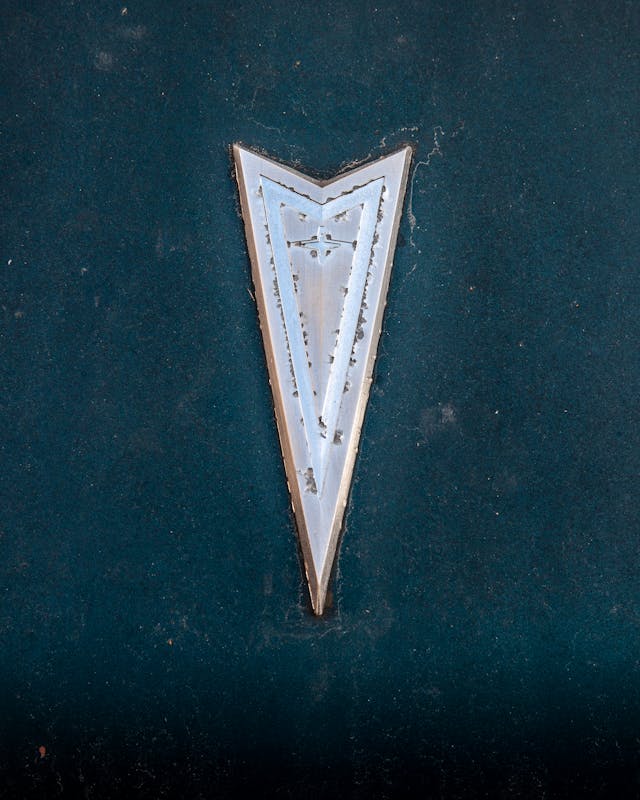
“One way to think about it is when objects are created, they are analogous to human children when they’re born,” Collier told us by phone. “We all look the same, we all look like Mr. Magoo. But by the time we’re in our 50s and 60s, we’re all palpably different from every standpoint.”
Likewise, said Collier, objects made in a mass-produced industrial environment are essentially all the same when they come off an assembly line. By the time they have experienced “the vicissitudes of life, they’ve been used, consumed, modified, changed, crashed, updated—all the things that happen to cars. They have gone from being one of a series of mass-produced products to being a one-of-one. They are uniquely transformed by their experiences, and those experiences are manifested in the patina.”
Patina isn’t like rain, descending from the heavens and wetting all objects the same, Collier continued. Every bit of patina on a car is unique and speaks to a very specific incident in its past, whether you know what the cause was or not. Patina gives an object a temporal dimension as well as a spatial one, which makes that object far more interesting, he believes. “That is as close as we can get to the reality of that object’s experiences over time. Why on earth would you ever mess with it?”
Besides, it’s important to remember that the clock never stops. A freshly restored car is the same as a freshly built car, in that both start aging the moment they are assembled. The scientific term is “inherent vice,” which is defined as the tendency of objects to deteriorate over time because of the basic instability of the matter from which they are made. In cars, plastics get brittle and crack, iron and steel rusts, rubber rots, glass hazes, and so on.
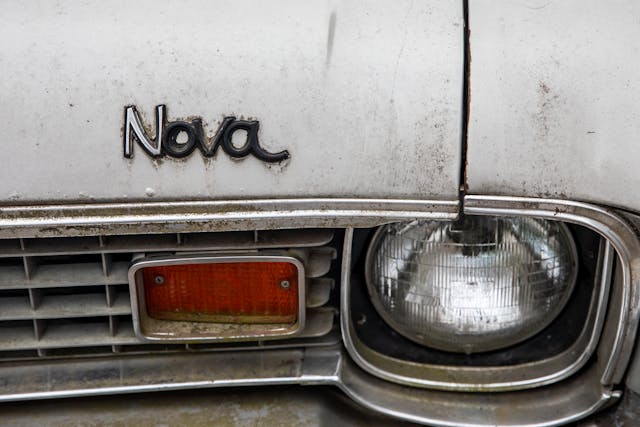
I think there’s an appreciation for a 200,000-mile Ford Pinto and there’s an appreciation for a completely restored Pinto. I don’t know that one is, you know, more respected than the other, because they’re equally as ridiculous. — Alan Galbraith, founder of Concours d’Lemons

A car is in motion even when it’s not—even if it’s parked on ceramic tile in a climate-controlled vault. “They all are on a downhill slide to oblivion at some point,” said Collier, “and that is something we need to know, and it makes owning these cars more of an obligation and at the same time is immensely freeing.” How so? Because any car acquires patina, whether it’s used as living room decoration, as a locked-away financial investment, or as it was intended, as a tool for mobility. Rather than fret about it and fight it, we really should be celebrating and participating in it.
OK, but if they were selling tickets in time machines to go back to 1965 and buy brand-new Mustangs out of the showroom, wouldn’t people like Lance Butler be first in line? Well, obviously that is impossible, and a car that attempts to go back in time through restoration, no matter how good or accurate the job is, “is for all intents and purposes a reproduction, a replica, a simulacrum, a facsimile,” said Collier. “All restoration is fictitious. I’m not saying that it’s a bad thing, I’m just saying that’s how it is.”
One reason is that any restoration done in the year 2023 brings with it a 2023 sensibility. “That sensibility automatically makes anything we do fictitious. Because we don’t see the world the way the maker saw it, or the way the user saw it, or the way the person who left it under the apple tree saw it.” Even if you can procure the exact correct paint, and paint it exactly as it was done originally, and chrome the bumpers with the exact same technique and materials, and so on, eventually you will come to points in the restoration where there is no choice but to “stick your finger in your mouth and put it up in the air and see which way the wind is blowing,” Collier said. Because you can’t go back in time and know everything that the people who originally built the car knew.
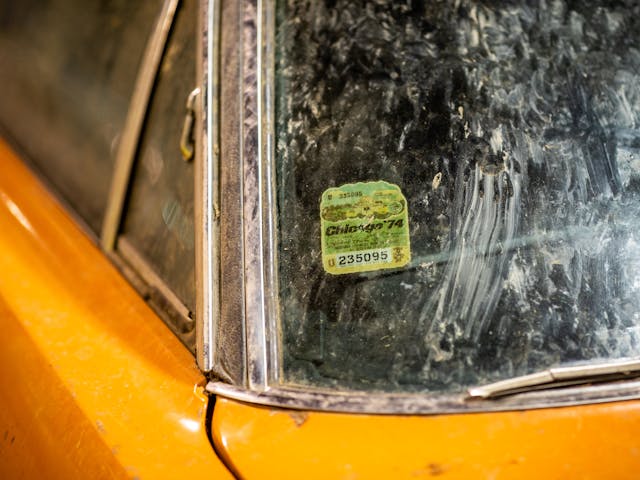
Yeah, but why does that even matter? A sizable contingent of the old-car world thinks like Babinsky’s customers and would argue that cars are best when they’re shiny and spotless. If not exactly new, then they’ll take a “fictitious” like-new on any weekday plus twice on Sunday. Certainly if the alternative is chipped, scratched, faded, dented, and fritzy. To be sure, owning and operating an original car brings its own pains. “They’re fragile things,” acknowledged Babinsky, whose oldest unrestored car is a 1903 Pierce-Arrow. “They are gradually falling apart.”
Fine, agrees Collier, there’s no problem with wanting shiny and reliable—that’s the owner’s privilege. And at some point, if the car is decrepit enough, it may tell its story better if it’s restored than if left original. That car’s journey toward patina, toward having a fresh story, will begin as soon as you back it out of the workshop.

But if everyone demanded shiny and new, we would be scrubbing away our own fingerprints on time. Patina “is the thing that humanizes cars,” said Collier, and that’s really what it’s all about for people who think like him. Machines in and of themselves are interesting, but like every other machine, a car is merely a tool, and “it’s the human-machine interaction, the human-tool interaction, the human-object interaction that is the critical thing that engages us. We love to see the tool, but we want to know how it was used, why it was used, what did the guy who made it think, what did the woman think, what were their fears, their interests, and so on. Those are the things that add flesh and blood to the object.”
So go out to your garage or driveway and behold your collection of rare, unique, ones-of-one. They are your fingerprints on time, your own flesh and blood as reflected in a machine, your proof that, like the moon, you rolled up a lot of miles and have the stone chips to prove it.
Then come back inside and keep reading.
***
Marketplace
Buy and sell classics with confidence
Check out the Hagerty Media homepage so you don’t miss a single story, or better yet, bookmark it. To get our best stories delivered right to your inbox, subscribe to our newsletters.
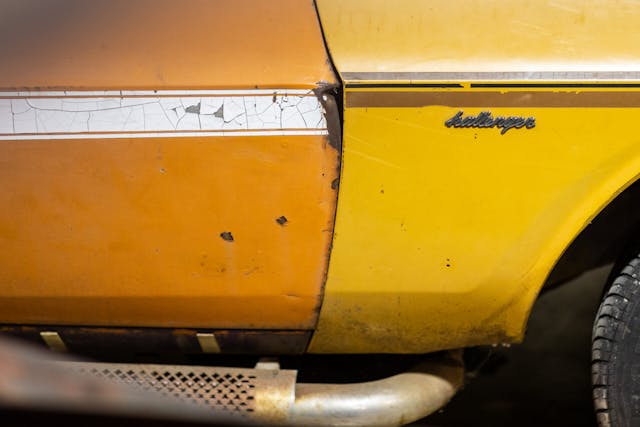

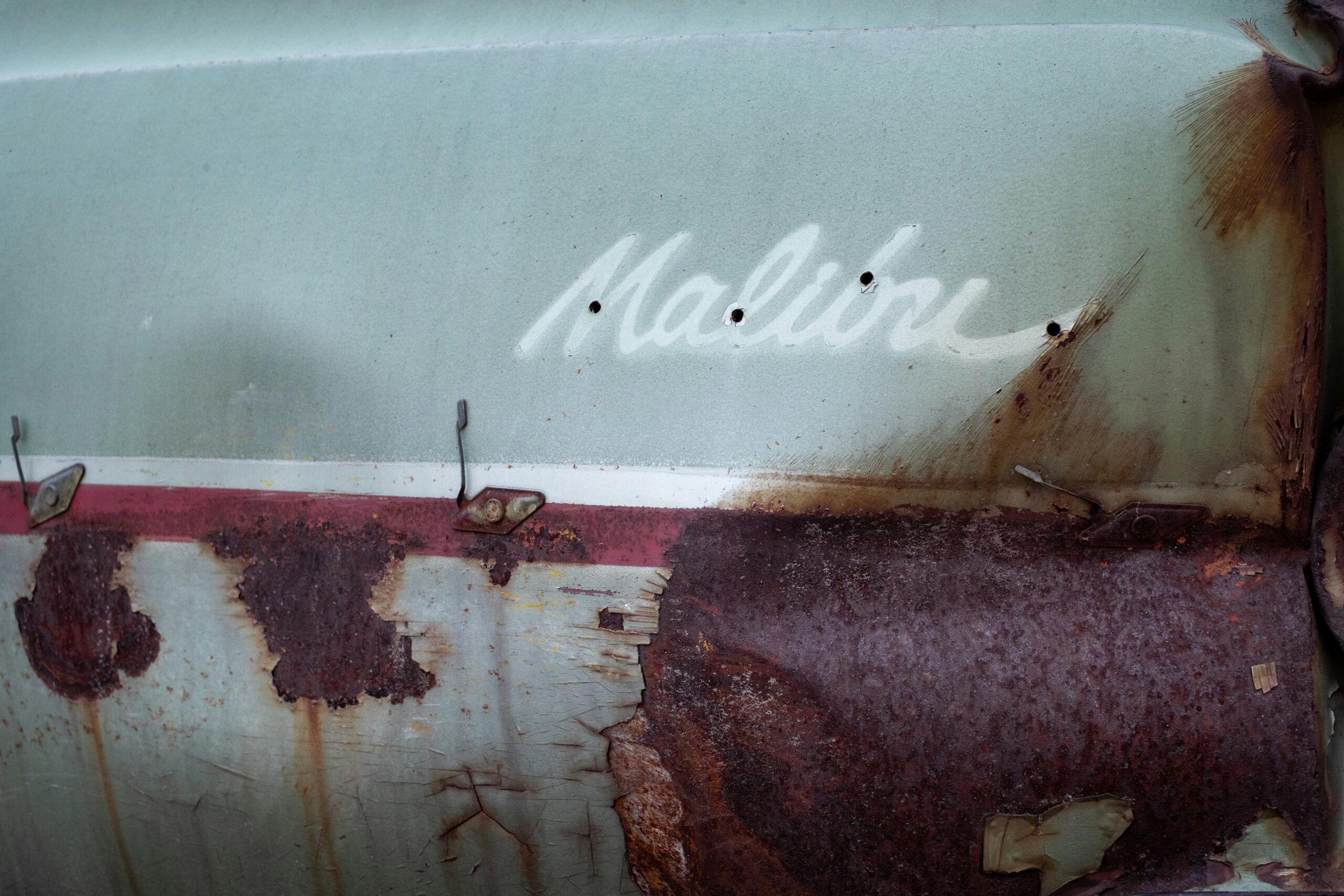


























Too often if a car is not restored it will continue to deteriorate. Yes some folks clear over patina but that does not stop a frame from rotting away.
The way I see it the owner is the one who gets to choose and that is what really matters.
To me the challenge is to try to bring a car back to be as good or better than it was. I am nearing that with the one car I have now. My other is the driver so if it has a chip or issue it is not as critical.
I have built my one car to be my car as it is of my own creation and even has my name on the gauge faces. That is the one I use to feed my competitive juices with.
The fun part is I have been competitive or beaten other cars for up to 1/4 of the money others have spent and I have done 90% of the work myself.
“Patina” is not bare rusting metal. That is a “pre-hole”, faster with salt, a little slower washed and under cover. Calico cars, fixed with donor panels, show the work in progress, but will eventually get some kind of corrosion control if not a real paint job.
Perfection ends with the first tank of gas on an unvacuumed road. If you want to drive and keep it perfect, John Wick airport driving is for you.
I just registered Grandma’s 1993 Escort LX wagon 1.9l 5 speed with 211K original and 13″ wheels as a Special Plate car in Oregon. Betcha well-preserved 75hp functional gasoline cars get pretty desirable (for their lack of African Child Slave Mined metals, etc.) in the next 10 years of Clownwerld.
I appreciate the record of use that one can read in an older unrestored car. But a fondness for patina is no excuse for not taking excellent care of a pristine car, whether restored or a survivor. Drive it, yes, but not in foul weather. Cover it and garage it when not in use. That’s my rule for my ‘55 BelAir, an early ‘90s restoration that looks a bit better than it did when I bought it 23 years ago. My 2019 Trax, on the other hand, is rapidly acquiring flaws, including a big blotch of “patina” as a reminder of the day my wife hit a tree while backing out of the driveway in a snowstorm several years ago!
“But a fondness for patina is no excuse for not taking excellent care of a pristine car, whether restored or a survivor.”
This is my mentality on it as well. I have an unrestored ’70 Eliminator that is “rough around the edges”, but it is garaged and cared for as if it were a pristine car! Likewise, my ’03 Mustang Cobra ~ cared for and maintained… yet it is my daily driver and is showing the wear from use. It is no longer a “pristine car” and despite my attempts to prevent it, it is now displaying “patina” as well.
If you’re using your cars, you can’t stop time and wear, no matter how well cared for.
Patina is a badge of honor worn by a survivor.
Restoration attempts to capture a point in time when the car was new, but as the article points out, it rarely does so accurately. And who cares? We are capturing a point that is a miniscule percentage of the life of a classic car. Patina captures the life of the car in use. Patina captures a car that survived time without restoration, probably just because someone took good care of it and kept fixing it when other would have junked it. Patina also represents a car that can shamelessly be driven like a car. Not something you can do with a meticulous restoration.
I like pretty and shiny, but I also like real legit patina. The fake painted on stuff is a no-go in my book. If the body of my 65 didn’t turn out to be the basket case it was, I would have replaced the drivetrain and drove it exactly as it was… rust holes and all. As it stands, I am still on the fence about exactly how far I am going to go with paint and finish… because I do intend to drive it
I’m okay with either camp, but what about faux-patina? Trying to make a car or truck LOOK like it has all of those little badges of use, but they are not really there. I can see if you put a new quarter on an otherwise “patina’d” vehicle and are trying to make it match the rest of the car – but to take a complete, not-so-bad-looking rig and sanding, painting, scratching and scuffing to try and make it looks like a more “used” vehicle makes little sense to me.
This. It’s like up-badging a car to present it as if it’s a higher-trim or higher-performance version of that car (BMW 3 Series owners are notorious for this.) I like natural patina; shows the car has been used and isn’t just a garage queen. Fake patina is just wrong.
Ha, that’s funny. I have never heard of BMW 3-series owners being specifically known for up-badging. I have owned numerous 3-series over time and have heard every BMW owner stereotype, but never this one! I’m not arguing that it’s not true; I’ve just never knew it was somehow associated with 3-series owners. My 1984 318i racecar proudly sports its original 318i badges which leads people to immediately write it off (and usually leads to their embarrassment).
BMW itself is guilty lately of up-badging their cars from the factory, in my opinion! The fact that there is such thing as a M340i or a X5 M is ridiculous – those aren’t M-cars. Putting the M badge on them just dilutes the M badge lineage.
Anyway, back on subject! I am happy that others appreciate the natural aging of a car. Everything we own is gradually returning to its natural state like the article said. I love enjoying all my cars as much as possible without worrying about value, depreciation, or whatever. I am a huge car nut, but I never forget that cars are just an orderly combination of metal, plastic, rubber and some other materials that have no feelings, aspirations, or emotions. We project ourselves onto them and give them “soul”.
I get Dub6’s approach. If circumstances went that way I can see myself with a restored, keep-it-nice (so restore it again) family heirloom car. That scenario is pretty likely to play out with my dad’s one car.
One of my cars is a lived-in driver. It had wild patina from a previous owner sanding half of it and leaving it in a driveway for 7 years uncovered. It was a cop magnet. The decision to deal with the surface rust and give it a cheap “temporary” paint layer was easy to make… gotta be 10 years on that paint now and patina has emerged through the thin layer (i.e., chip flaking off) and worn in. I’m still collecting parts and not all that motivated to “restore it right”. It’s fun to drive now.
The project car stashed in a family member’s barn has legit patina from it’s last-driven in the early 80’s sat outside for all but the last 8 years life. I’ve entertained bringing it back to life for 20 years (it’s a huge project… 99% of the world would say scrap). If I do it… it will be “Kintsugi” the repairs needed to the body will be done to new quality and correct. So the faded/scarred green and white paint will have sections of brand-new paint abutting it such as the rockers that need redone. For me, this idea is the honest telling of this car’s story which appeal to me –no way am I fake aging replacement rockers to match.
Yeah since all you really have to do is use the car for a daily driver in Michigan for one winter. you will have plenty of patina!
Budget is a thing. I wouldnt mind a perfect car but its not the responsible choice for me. and to the guy that says i shouldnt drive in the rain, it’s my car man
I’m with ya – your ride, your rules.
“Shouldn’t” is not the same as “cannot” – everyone is entitled to his/her opinion, just as they are entitled to deciding when to drive a car.
I’ve been chided for driving my classic when there’s a chance of rain. Yes, rain is more acidic than it was in the 60’s. You know what else has changed? Paint makeup, so one that’s been repainted in the last decade would likely have a mixture accounting for that.
To me, a rusty, dented car was what I was forced to drive for most of my life. I had “patina” coming out my ears! IMHO, the only thing that improves with age is whisky. Keep your patina.
I cut my driving teeth driving rusty dented cars, then of course as things moved along, I started getting pretty shiny ones and discovered that every time I wash them, I could identify every single miniscule new stone chip or tiny dot of rust. I now have cars in both camps and they both have their place
I had the privilege of examining an old Ferrari race car. It was squirreled away so long some experts thought it was destroyed. Other than the owner, I was probably the first to see it in 30 years. In poor condition, but so special. Driven by several of my heroes, and I got to touch all of it. A year later it was at Monterrey, restored better than when it was new. Not a single magical part left as was. I could hardly stand it.
I can certainly sympathize. In the 60’s I was allowed to hang out in the shop of my friends father. He ran a ’60 3000 Healey (BN7) at all the SCCA events around the Chicago area. Eventually dad quit racing and my friend kept the car as a daily driver. It became a weekend ride to the local cruise ins and she remained in her original skin and paint. She was well maintained mechanically and I would not have thought twice about a cross country trip.
My friend knew I had always lusted after that car and one day out of the blue in 2010 he offered to make it mine. I went to see the car and she was just as I remembered it. Still had that dent in the boot from a B-Production ‘Vette at Meadowdale. Yes her paint was a bit faded but 50 years in the garage and liberal coats of paste wax kept her glow alive. Unfortunately my friend passed before we got the paperwork completed. His wife (#3 and more interested in money than history) sold the car to some jerk with more money than gear oil in his veins. He had it restored at one of those boutique places and it ended up looking like a new car. Not a new 1960 AH 3000 but a 2010 shiny thing from a modern manufacturer.
I saw it once at a car show. The jerk was bragging about her racing past but the DNA of those who touched her, who made her run and kept her shiny side up had been erased. She was just another 1960 BN7. As you said, all of the magic was gone. I did not cry then but am about to now.
Just enjoy them.
I had the privilege of being invited into the “backroom” of a wonderful motorcar and automobilia museum. Dozens of vehicles in various stages of patina and repair-only-as-necessary, not restoration. The joy of seeing how they were used and left, touching metal and leather and taking in the scents was sublime. Best Museum. Visit. Ever.
Patina. It is fine as long as it is normal wear and tear from use. Rust? Missing parts or holes in the seats? Then Patina means: I am too cheap to perform needed upkeep on my automobile. My HOA will come down on me like a tornado in a trailer park if I let my house have Patina. Paint that is falling off, rusted body panels is pure and simple lack of maintenance. Not some beautiful work of art. This is what car collecting has come to. In the 80’s I owned an all original 1971 Corvette with 45,000 miles. Corvette paint from the 60’s and early 70’s did not age well, but this was a one owner car and it was mostly beautiful. It had minor cracking and a spider web or 2. Everywhere I took it I was told to get it painted. Patina didn’t exist then, apparently. Now that all those original cars have been restored due to everyone’s dislike of Patina, the new thing is to seek these cars out and say what a great find I have. “That’s not rust, that’s Patina”. Bologna. Where were you 30 years ago? Paint your dang cars.
I prefer a nicely painted car. Does not have to be perfect but flaking, rusting, etc. is not really my thing.
Patina is fine on an old pickup or a historic race car, not so much on other vehicles.
Nowadays, patina is becoming seriously overrated.
Over-rated, yes. I keep waiting for the fad to expire of boredom. Of course, if it’s a project in-progress…
My buddy always had a winter beater. Besides making it dependable and the heater working, all he did to the outside was to buff out the hood. He reasoned that’s all you see when you’re driving it anyway. The other thing he did was anytime he took something apart to fix it, he always painted it. That way he knew at a glance what’s been gone over in the past.
my recommendation to people who get a brand new car or a ‘100 point trailer queen’ is if they’re really anal uptight about someone breathing on it wrong – we’re talking to you, Cameron’s dad – is to purposely scratch it or otherwise make a mark to make it imperfect yourself so you can get on with life.
oh, and the article mentioned how we all look the same at birth? really? what about how everyone starts looking the same when they get old?
Steve Babinsky may have helped start the formal Preservation class at Pebble in ‘98, but I believe the seed was planted five years earlier when an unrestored Bugatti Grand Prix car was displayed on the lawn as an exhibition-only entrant. I can’t remember the model now (maybe a Type 59?), but it was black, looked like something you’d pick-up at Larry’s Used Cars for $1,000, and stood-out like a sore thumb next to all the perfectly restored cars of the time. The concept of NOT restoring a valuable vintage car was so radical at the time that I remember organizers going out of their way to explain why the car was even allowed on The Lawn.
I agree with earlier comments that the “preservation” moniker has gone too far; especially when there is little in the way of historical significance to be had by maintaining the car’s original condition.
Case in point: I was at a local concours recently where a preservation 289 Cobra was displayed. My takeaway? Not that of a valiant survivor, but rather a car that couldn’t even get its normal needs taken care of: it had a rotting interior where literally the shift boot was dissolving as I stood there, the upholstery was shoddy, and the bodywork wasn’t much better.
I’m not advocating for 101 point restorations where cars are poo-pooed for not having the right chalk marks on the driveshaft, but there has to be some middle ground between the over-restored garage queens and today’s shabby-chic preservation cars that look like they’re owned by a starving college kid who can’t even afford the $0.75 to air-up his tires at the gas station.